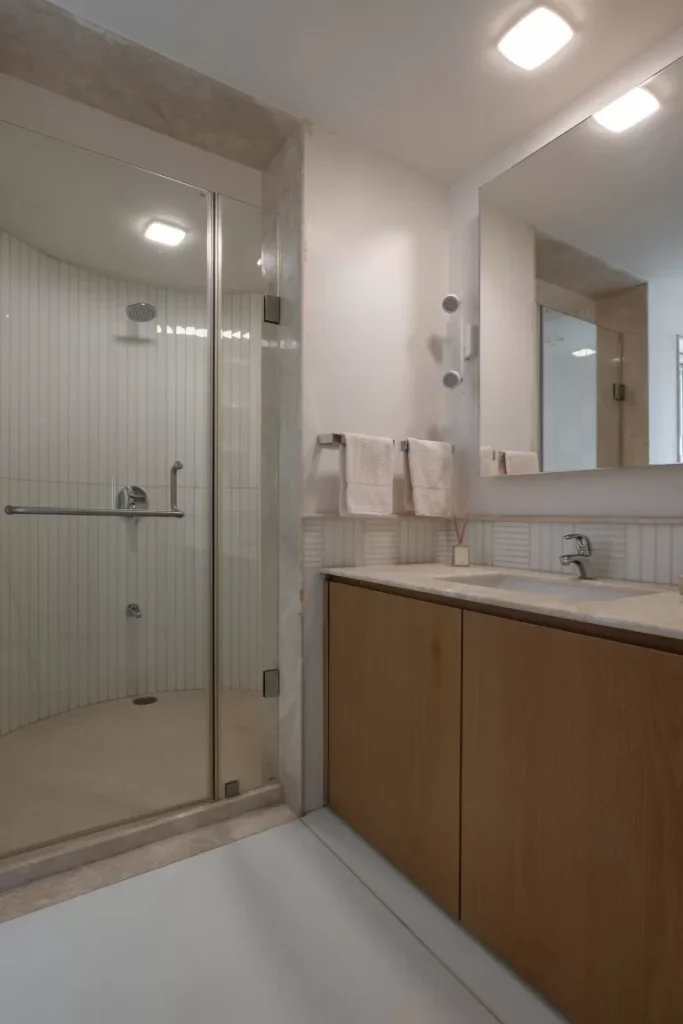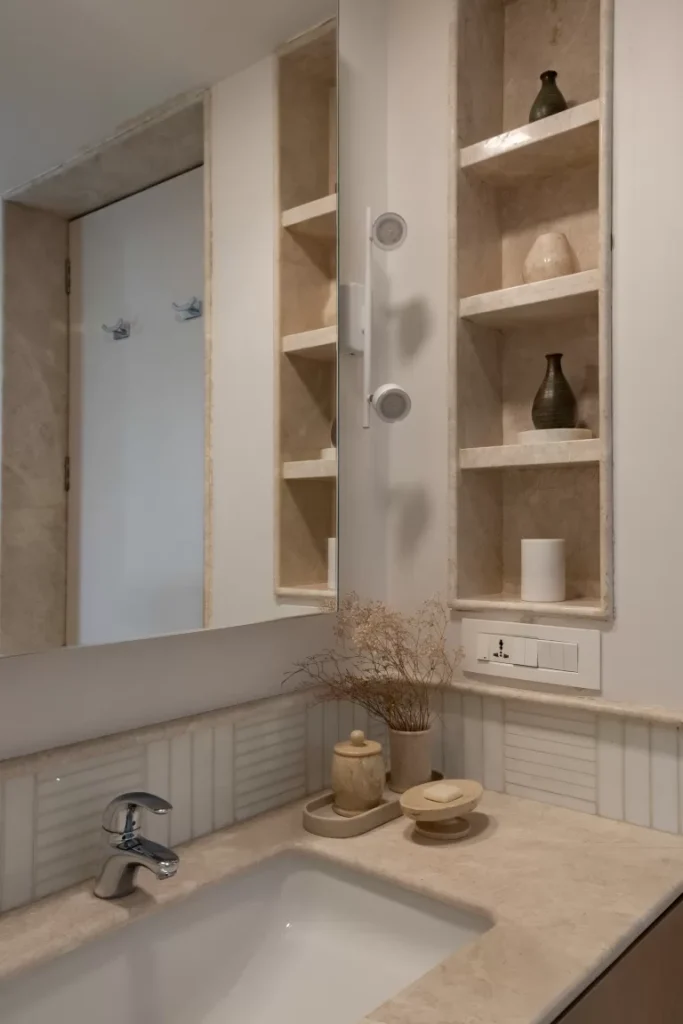In small bathroom layouts, every square inch counts. Without a thoughtful plan, a small space can quickly become cluttered, making it feel even more cramped. The right bathroom layout not only enhances functionality in interiors but also creates a sense of openness. Think about it—how frustrating is it to move around a bathroom where the sink blocks your movement, or the shower takes up more space than necessary? This is why a well-considered layout can make all the difference. It’s about making smart choices that improve the flow, accessibility, and comfort of the space.
So, how can you create a small bathroom layout that balances both practicality and design? Let’s explore how to make the most of a small bathroom while ensuring it remains both beautiful and efficient.
Understanding the Basics of Small Bathroom Layouts
It is essential to understand the key components that define a small bathroom. Typically, a small bathroom ranges from 30 to 70 square feet. The primary fixtures include:
- Toilet
- Sink
- Shower or Bathtub
Each of these elements needs to be strategically placed to ensure optimal functionality and flow. Think of your small bathroom as a puzzle; each piece must fit perfectly for the entire picture to come together harmoniously.
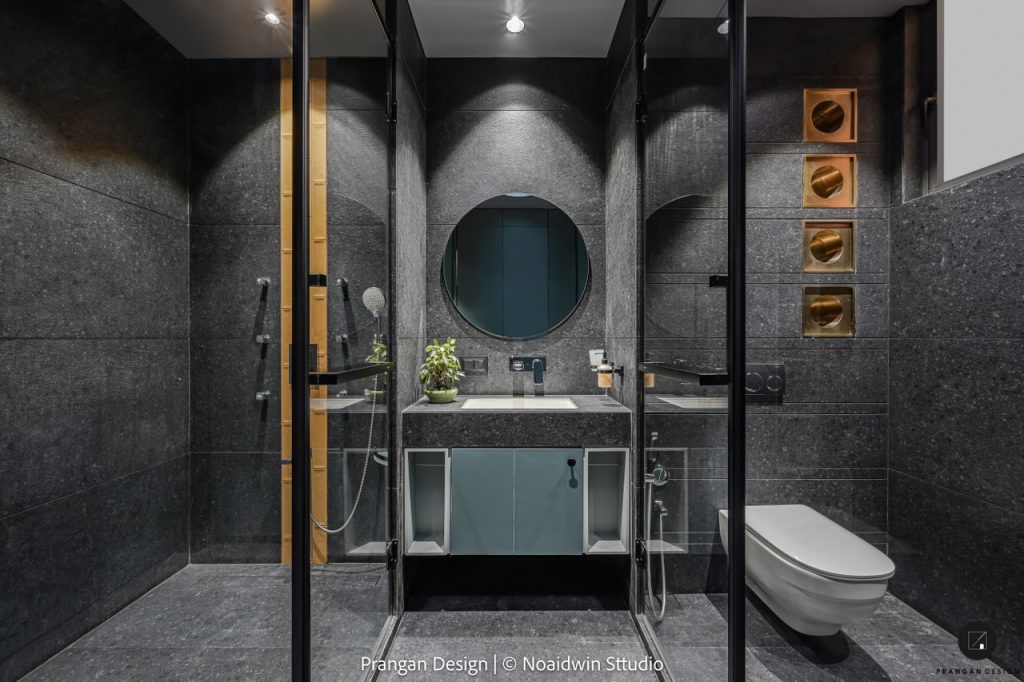
Why Does a Bathroom Layout Matter?
Simply put, the layout determines the flow, usability, and efficiency of the space. With limited square footage, even a small misstep can make your bathroom feel cramped, cluttered, or inefficient. In contrast, a well-planned layout can turn a small bathroom into a sanctuary, where everything is within reach, and space is used to its fullest potential.
The layout of your bathroom can significantly impact your daily routine. A well-thought-out design can make your morning rituals smoother and more enjoyable. Conversely, a poorly planned layout can lead to frustration and inefficiency.
Tips for Small Bathroom Layout
1. Assess the Available Space
The first step in designing any bathroom is to measure the available space accurately. Knowing the dimensions of your bathroom helps in planning a layout that fits your needs without overcrowding the room. Take note of features like windows, doors, and plumbing lines, as these will impact your layout choices. The more detailed your measurements, the easier it will be to decide where each element should go.
Consider whether a full bathtub will fit or if a shower stall would be more practical, and whether you can incorporate extra storage without making the room feel cramped. These considerations will guide your decision-making process.
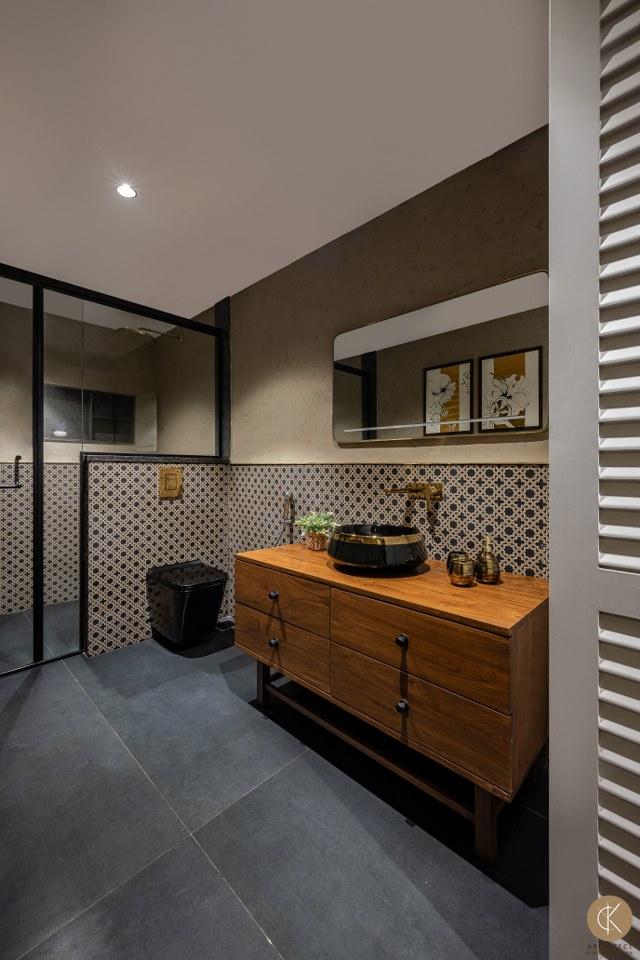
2. Prioritize Your Fixtures
Choosing the right fixtures is crucial in small bathroom layouts. While it might be tempting to include everything, such as a luxurious bathtub or double sinks, it’s essential to be realistic about the space you have. Prioritize the most important fixtures first: the toilet, sink, and shower or bathtub.
- Toilet: Choose a compact or wall-mounted toilet to save space. With hidden tanks, they look sleek and free up valuable floor area.
- Sink: A pedestal or wall-mounted sink is perfect for small bathrooms, as they occupy less space than vanities. A corner sink can also utilize otherwise wasted space.
- Shower or Bathtub: Consider your lifestyle when choosing. A walk-in shower with a glass enclosure creates an airy feel, while a smaller tub offers the luxury of a soak without overwhelming the space.
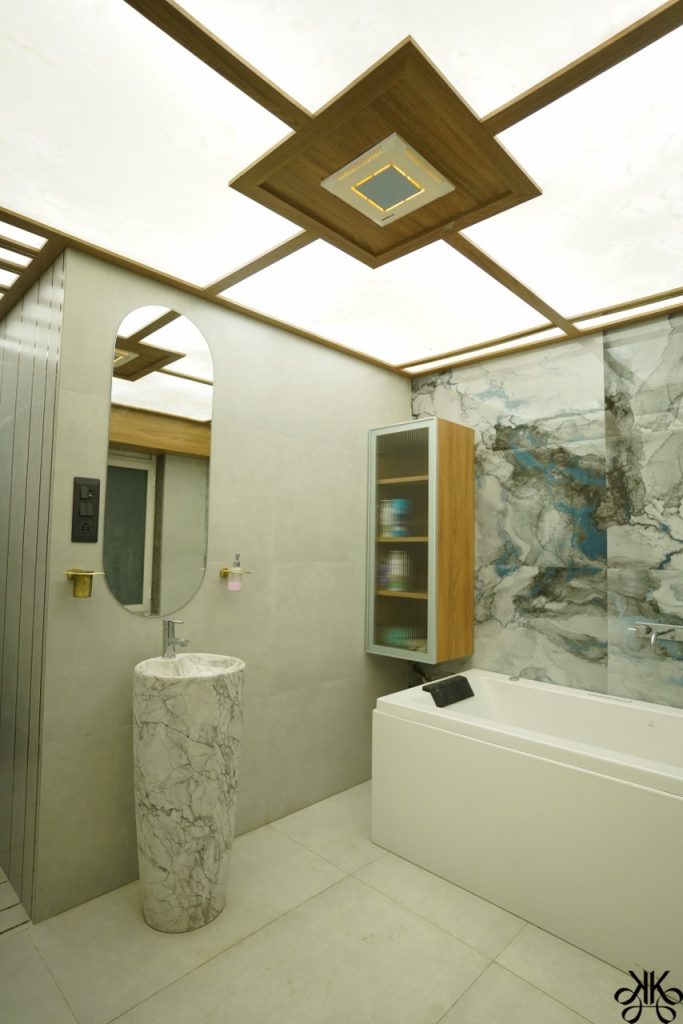
3. Storage Solutions that Save Space
Lack of storage can lead to clutter, making your bathroom feel even smaller. But fear not! There are many creative storage solutions tailored for small bathrooms.
- Floating shelves: These are perfect for storing towels, toiletries, and decor items while maintaining a minimalist look.
- Recessed cabinets: Recessed storage built into the walls saves space while offering the storage you need. Consider adding recessed shelves in the shower for soap, shampoo, and other essentials.
- Over-the-toilet storage: Utilize the space above the toilet by installing shelves or cabinets for storing towels or decorative accents.
4. Choose Space-Saving Doors
Traditional swing doors can eat up valuable space in a small bathroom. Instead, opt for alternatives like pocket doors or sliding barn doors. Pocket doors slide into the wall, eliminating the need for clearance space when opened. Not only does this free up space, but it also gives the room a cleaner, more modern appearance.
If a pocket door isn’t an option, consider installing a barn door that slides along a track. Barn doors are a trendy, space-efficient solution for tight areas, making them ideal for small bathroom layouts.
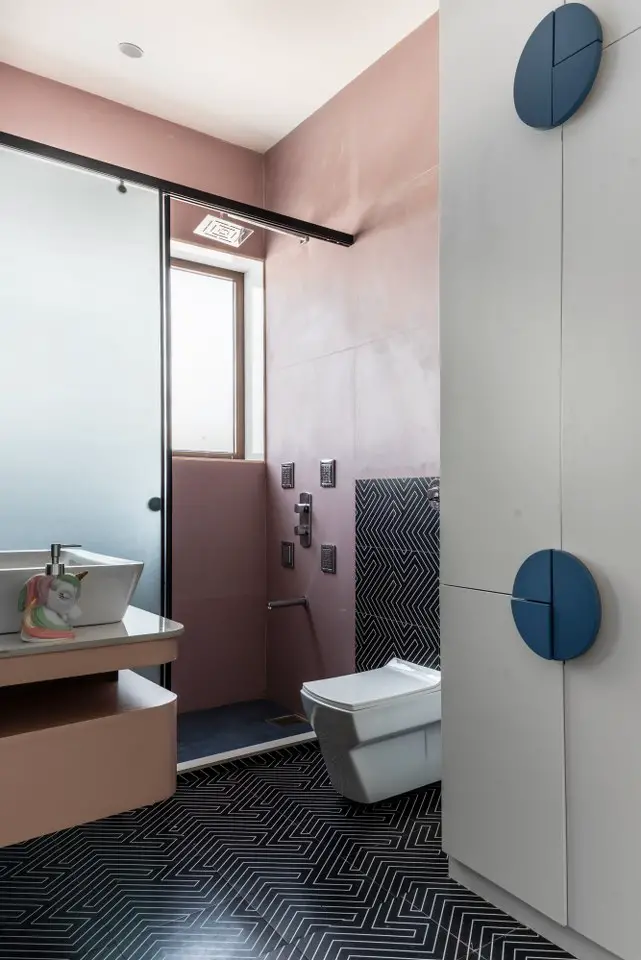
5. Incorporate Lighting to Enhance Space
Lighting is essential in any bathroom, but it’s especially critical in a small bathroom layout. Proper lighting can make the space feel larger and more welcoming. A well-lit bathroom is inviting and functional, so pay close attention to your lighting plan. Here are some ideas:
- Natural light: If your bathroom has a window, maximize the natural light. Use frosted glass or light-filtering shades to maintain privacy while allowing sunlight to brighten the room.
- Ambient Lighting: Overhead fixtures provide general illumination.
- Task Lighting: Sconces beside mirrors ensure adequate lighting for grooming tasks.
- Accent Lighting: LED strips under floating vanities or shelves add depth and interest.
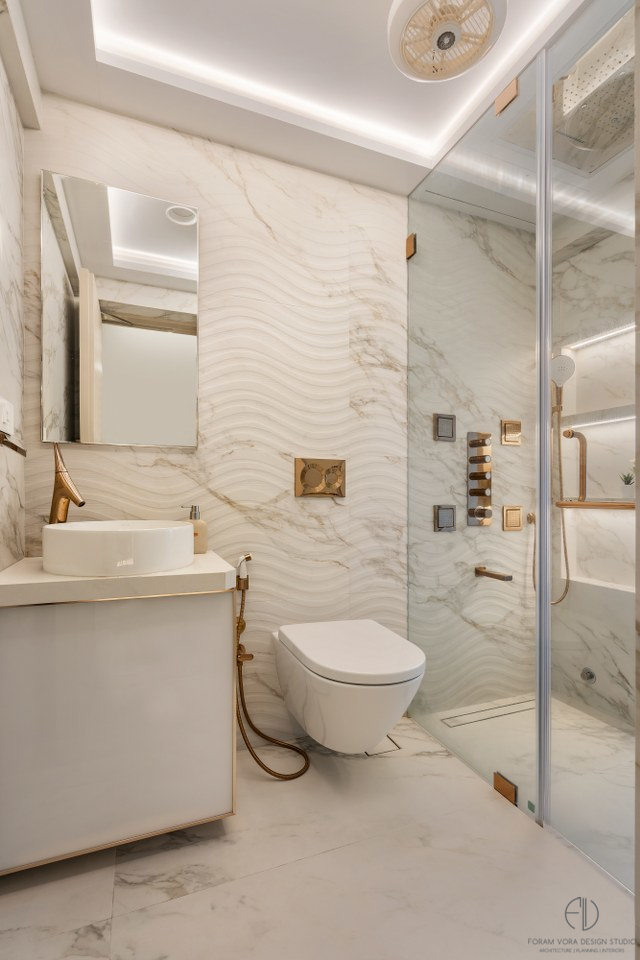
6. Don’t Forget Ventilation
Ventilation might not be the first thing that comes to mind when designing a small bathroom layout, but it’s incredibly important. Small spaces can become stuffy and prone to moisture buildup, which can lead to mold and mildew. Ensure proper ventilation by installing an efficient exhaust fan, preferably one with a timer to prevent excess moisture buildup.
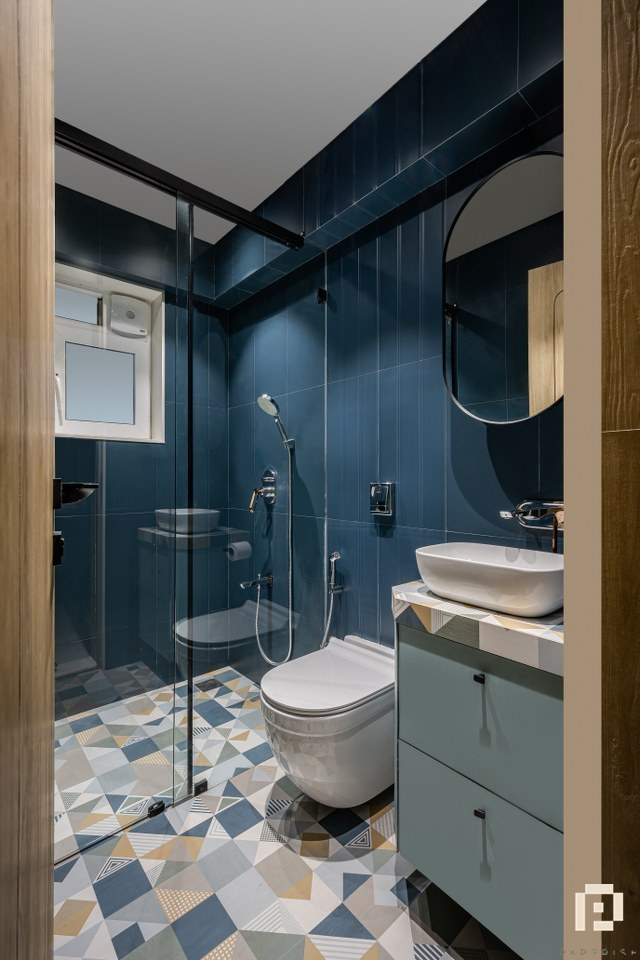
7. Flooring for Small Bathrooms
The choice of tile in your small bathroom can significantly influence how spacious it feels. Larger tiles minimize grout lines, creating a smoother visual flow, which can make the room appear bigger. Lighter-colored floors reflect more light, enhancing the sense of space, while darker floors can make the room feel cozier but more enclosed. For a seamless, continuous look, consider extending the floor tiles up one wall to draw the eye upward, creating the illusion of height and adding a sense of openness.
Opt for durable, water-resistant materials like porcelain or ceramic tiles, as these are ideal for high-moisture areas like bathrooms. Larger tiles, as mentioned earlier, can create the illusion of more space, while smaller mosaic tiles might make the room feel busier.
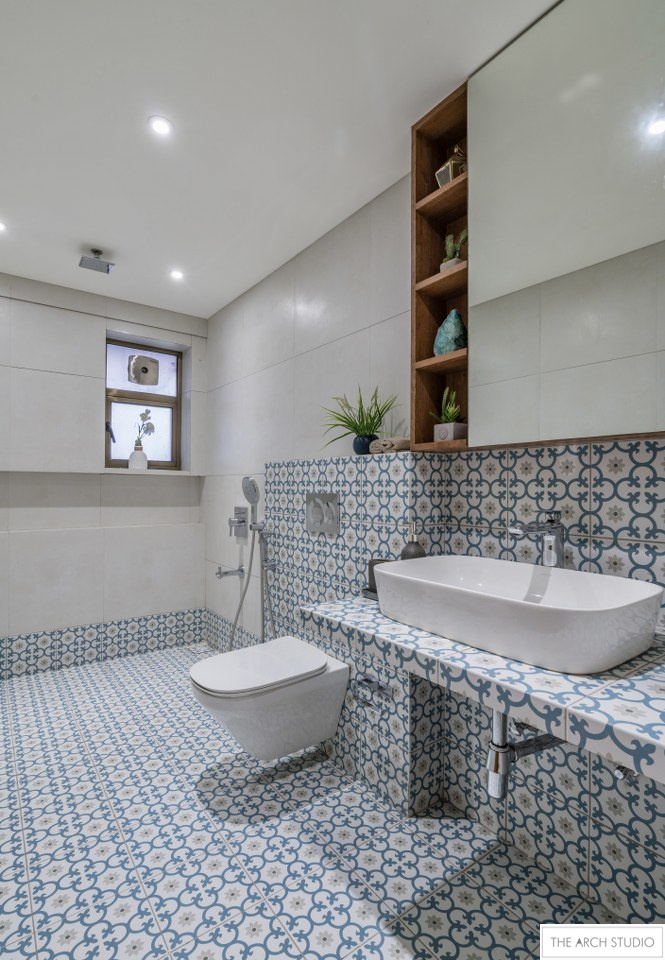
8. Play with Tile Patterns and Sizes
Did you know that tile size and pattern can significantly affect the perception of space in a small bathroom? Large tiles with minimal grout lines can make the room appear bigger, as they create a continuous surface that isn’t broken up by too many lines.
Alternatively, using the same tiles for the floor and extending them up the walls can also make the space feel taller. This seamless look draws the eye upward, creating a sense of height. Avoid busy patterns or bold colors, as they can make the room feel chaotic and cramped.
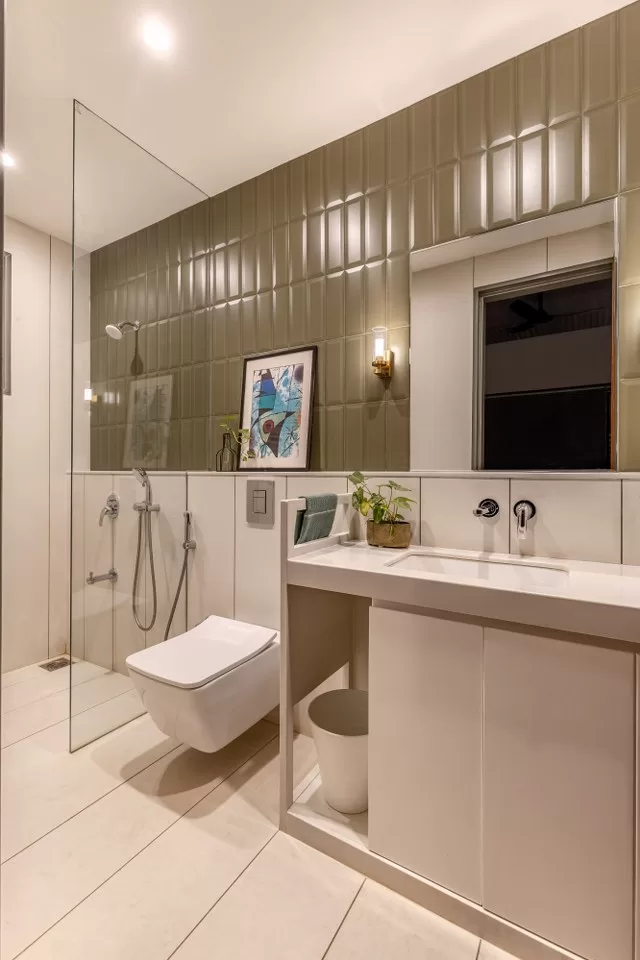
9. The Power of Mirrors
Mirrors are a key element in small bathroom layouts for both their functionality and ability to enhance the sense of space. Not only do they serve a practical purpose, but they also reflect light and create the illusion of a larger room. To maximize their impact, consider the following tips:
- Large, frameless mirrors: Installing a large, frameless mirror above the vanity can make the bathroom feel more open and spacious by reflecting light and visually expanding the area.
- Mirrored cabinets: These provide additional storage while adding depth to the room, serving a dual purpose in small spaces.
- Mirrors with built-in lighting: For an even bigger impact, choose a mirror with built-in lighting. This not only improves visibility for tasks like shaving or applying makeup but also boosts the overall brightness, making the room feel airy and expansive.
By incorporating these strategies, mirrors can transform a compact bathroom into a more open and inviting space without sacrificing functionality.
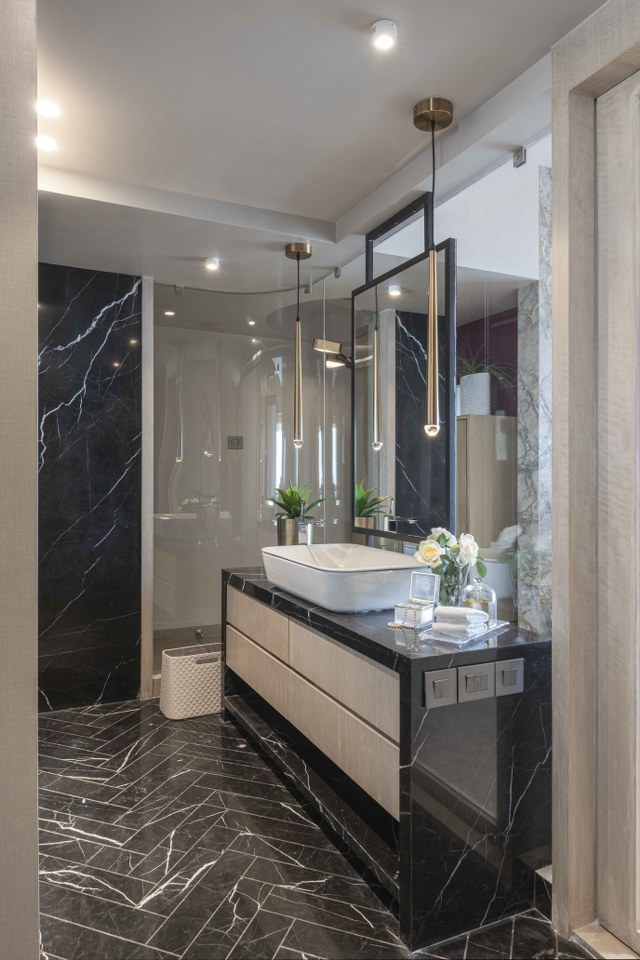
10. Floating Features and Corner Solutions
To maximize floor space in small bathrooms, consider incorporating floating features and embracing corner spaces. Here’s how these strategies can enhance your layout:
- Floating Features: Install floating vanities, toilets, and shelves to create the illusion of a larger room by exposing more floor area. Increased visibility of the floor makes the bathroom feel less confined.
- Corner Solutions: Utilize corner spaces for fixtures like corner showers or vanities, which are often underused. These installations free up valuable space in the center, enhancing the overall openness of the area.
By strategically combining floating elements with corner solutions, you can transform your small bathroom into a more functional and airy space.
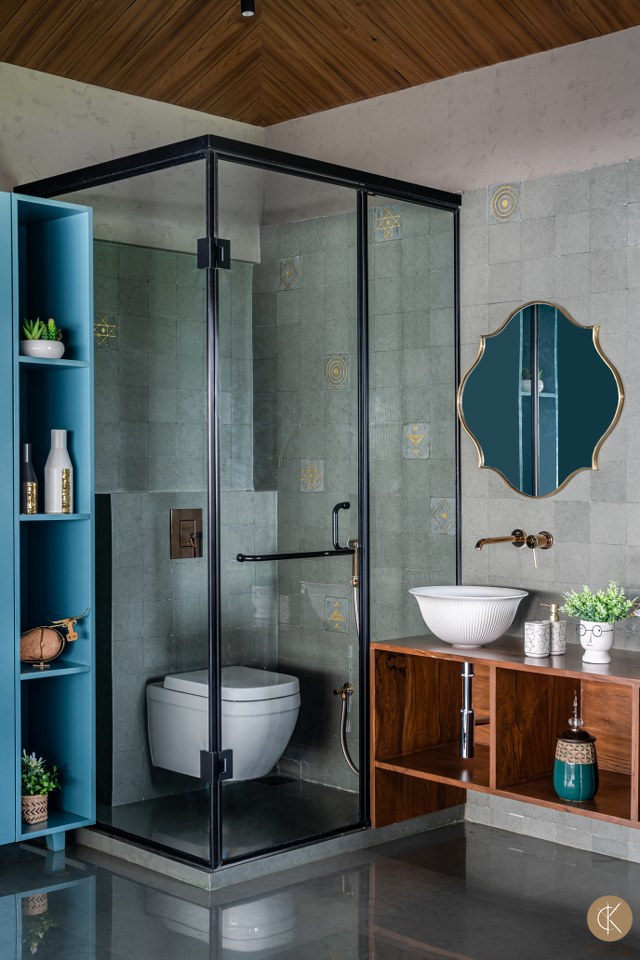
Conclusion
A small bathroom doesn’t have to feel limiting. Remember, it’s not about the size—it’s about how you use the space. With smart planning, careful layout choices, and creative storage solutions, even the tiniest bathrooms can be transformed into practical, beautiful spaces. Small bathroom layouts are all about maximizing the space you have, making every inch count.
So, the next time you’re working with a small bathroom, remember: size isn’t everything. With the right approach, you can create a space that not only meets your needs but also reflects your personal style. Remember that every inch counts; embrace it fully! Happy designing!
Content Written and Research By: Ar. Isha Bora

